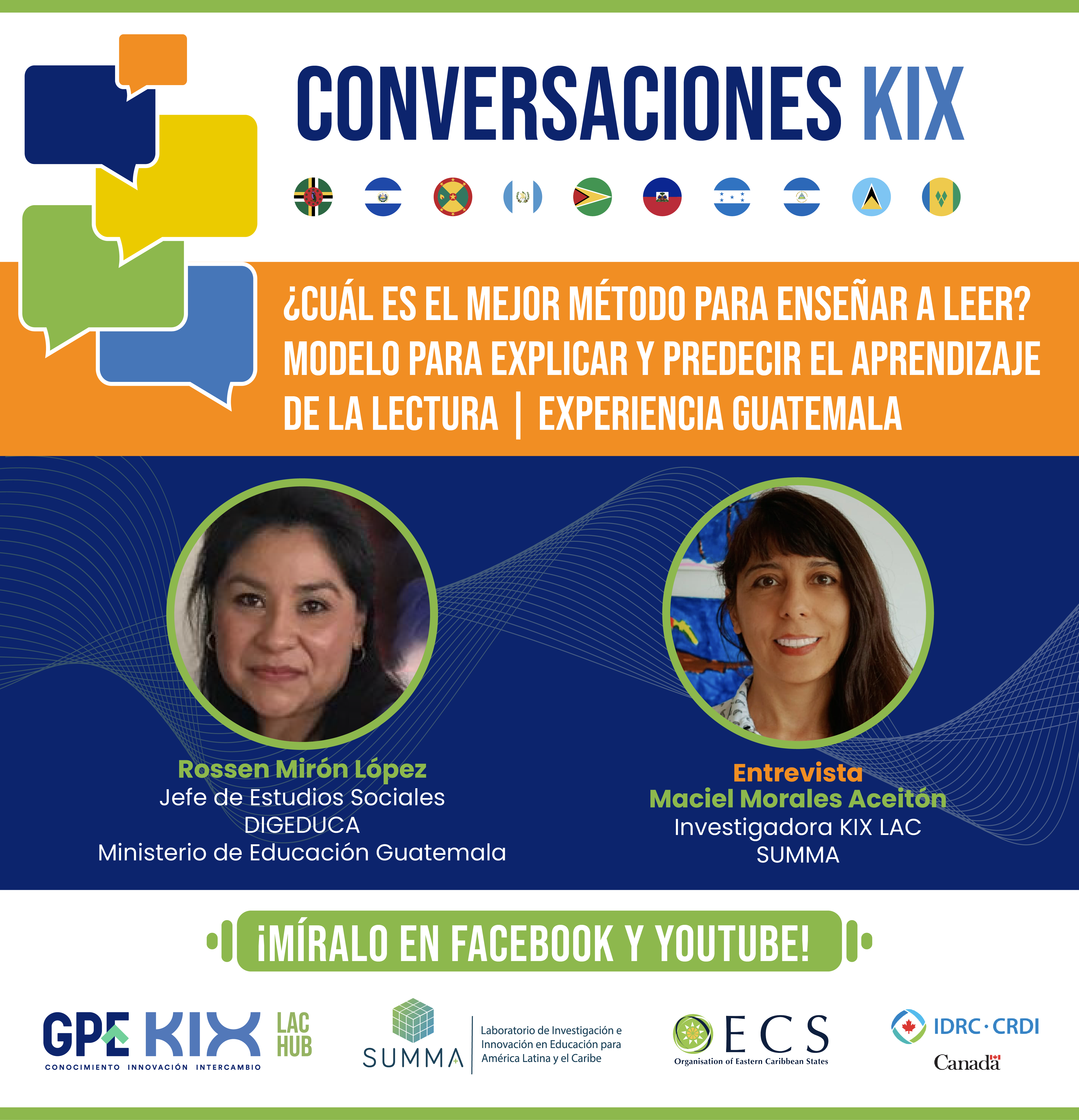
The tenth edition of KIX Conversations was attended by Rossen Mirón López, Head of the Department of Social Studies at the General Directorate of Educational Assessment and Research of the Ministry of Education of Guatemala and KIX LAC Hub representative for this country, who was interviewed by Maciel Morales Aceitón, Researcher at KIX LAC.
On this occasion, the theme delved into "What is the best method to teach reading? A model to explain and predict learning how to read", presenting the main challenges faced when learning how to read and the importance of a model that can guide teachers, managers, education workers and governments when developing policies and more effective educational strategies.
This model was created in 2015 from the analysis of the early years reading assessment test - ELGI - applied in 2014, and in response to a study that was carried out in order to understand how reading and writing is learned by 7-year-old children (first grade), exposing which are reading skills and how learning to read is achieved.
According to a report prepared by the World Bank, the countries of Latin America and the Caribbean could be the second region with the highest absolute growth in the "learning poverty" indicator, defined as the percentage of 10-year-old children unable to read and understand a simple story, which could have grown from 51% to 62.5% This could equal an additional 7.6 million boys and girls in primary education in the region that are "poor in learning".
Currently, Guatemala has 8 educational policies, and the second of them refers to Classroom Quality Policy, which has various objectives aiming at: a) institutionalizing reading as a model for thought building, b) curricular transformation to generate guidelines for the application of learning strategies in the classroom, and finally, c) inclusive education, which seeks to modify the structure of the curriculum in its pedagogical and administrative procedures in order to achieve cultural belonging, attention to disabilities, talents and vulnerable groups.
In this sense, and with a view to 2022, Mirón López assures that based on current policies and the results of the model, one of the great challenges at regional level will be for teachers to monitor literacy learning, being the ones who are most knowledgeable on the processes, activities and methods of delivering learning to the children.
Document: A model for Guatemala to explain and predict learning how to read (in Spanish)
